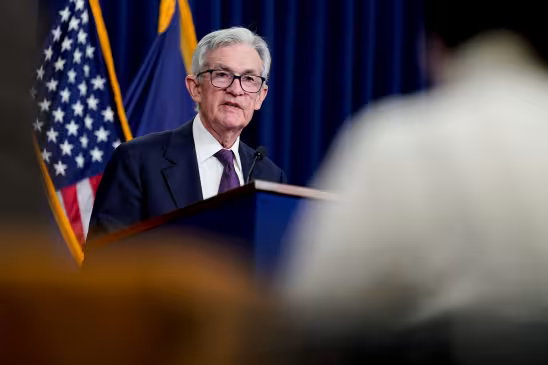
Federal Reserve officials debated the staying power of inflation at the central bank’s December meeting, with a range of views on where interest rates could settle in 2025. Policymakers emphasized that policy is not on a preset path and will need to evolve in response to both economic data and the new administration’s policies.
“Participants expected that inflation would continue to move toward 2%, although they noted that recent higher-than-expected readings on inflation, and the effects of potential changes in trade and immigration policy, suggested that the process could take longer than previously anticipated,” read the minutes, which were published on Wednesday afternoon. “Several observed that the disinflationary process may have stalled temporarily or noted the risk that it could.”
The Federal Open Market Committee—the Fed’s policymaking committee—voted at the Dec. 17-18 confab to lower the federal-funds rate target range by a quarter of a percentage point, to 4.25% to 4.5%, for its third-straight meeting. Officials also signaled a slow and gradual pace of rate cuts ahead, due to lingering inflation, solid economic growth, and fiscal policy uncertainty.
In a quarterly update to the Summary of Economic Projections, Fed officials’ median estimate for the federal-funds rate target range at the end of this year moved to imply a range of 3.75% to 4%. That’s half of a percentage point below its current level. The median forecast in the previous so-called dot plot implied a full percentage point of cuts in 2025.
“Many participants suggested that a variety of factors underlined the need for a careful approach to monetary policy decisions over coming quarters,” the minutes read. “These factors included recent elevated inflation readings, the continuing strength of spending, reduced downside risks to the outlook for the labor market and economic activity, and increased upside risks to the outlook for inflation.”
Officials see inflation remaining more elevated in 2025 than they previously expected, finishing the year at 2.5% as measured by the Fed’s preferred price gauge. They also expected the unemployment rate to tick up this year but at a slower pace than before. December jobs data is due on Friday morning.
Overall, Fed officials gave an upbeat assessment of the state of the U.S. economy. “Participants observed that economic activity had continued to expand at a solid pace and that recent data on economic activity and consumer spending in particular were, on balance, stronger than anticipated,” the minutes read. “Participants remarked that consumption had been supported by a solid labor market, rising real wages, and elevated household net worth.”
Republicans will control Washington for at least the next two years, with an agenda focused on curbing immigration, lowering taxes and regulations, and enacting tariffs on trading partners. As described on the campaign trail, many of the proposed policies could boost economic growth and inflation.
“All participants judged that uncertainty about the scope, timing, and economic effects of potential changes in policies affecting foreign trade and immigration was elevated,” the minutes read.
The decision to cut by a quarter of a point on Dec. 18 wasn’t unanimous: There was one dissenting vote from Cleveland Fed President Beth Hammack, who preferred no change. She is no longer a voter on the FOMC in 2025, with four new regional Fed presidents rotating in. It appears she was not alone in her doubts.
“Some participants stated that there was merit in keeping the target range for the federal funds rate unchanged,” the minutes read. “These participants suggested that the risk of persistently elevated inflation had increased in recent months, and several of these participants stressed the need for monetary policy to help foster financial conditions that would be consistent with inflation returning sustainably to 2%.”
Since the December FOMC meeting, the November inflation data came in softer than expected—but still too high. The Fed has a 2% annual inflation target, as measured by the personal consumption expenditures price index.
Policymakers will next meet on Jan. 28-29, after the publication of December employment and inflation data. Interest-rate futures markets on Wednesday were pricing in a less-than-5 % chance of a rate decrease then, and the greatest odds of just one quarter-point cut in 2025.


